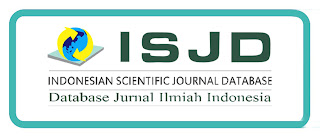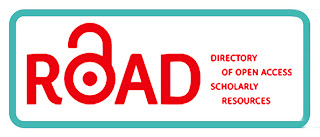PERANCANGAN ELECTRONIC VOTING (E-VOTING) BERBASIS WEB UNTUK PEMILIHAN REKTOR UNIVERSITAS NEGERI MAKASSAR
(1) Universitas Negeri Makassar
(2) Universitas Negeri Makassar
(*) Corresponding Author
DOI: https://doi.org/10.26858/jessi.v1i2.16083
Abstract
E-voting is the use of hardware and software to establish an electronic system that is useful in the electoral process by making electronic sounds that replace ballot papers. E-Voting was introduced by some e-goverments especially in Europe in the request to serve the provisions of voting by providing a control system, so that voters can cast their ballots anytime and anywhere. The Senate of Makassar State University (UNM) will carry out the election of a new rector for the 2020-2024 period with an e-voting system. With the use of e-voting members of the senate and representatives of the Minister of Education and Culture, the use of voting rights is carried out online. This web-based e-voting has the ability to be accessible anywhere but the selection process remains in the room. In this system, the results obtained from E-voting at Makassar State University from three important parts are, namely, the voting system, the vote calculation system, and the print system of election results and there are three access rights, namely admin, committee, voter.
Keywords
Full Text:
PDFReferences
A. Rokhman, “PROSPEK DAN TANTANGAN PENERAPAN E-VOTING DI INDONESIA,” p. 22.
M. Ridwan and Z. Arifin, “RANCANG BANGUN E-VOTING DENGAN MENGGUNAKAN KEAMANAN ALGORITMA RIVEST SHAMIR ADLEMAN (RSA) BERBASIS WEB (STUDI KASUS : PEMILIHAN KETUA BEM FMIPA),” p. 7.
M. Arifin and H. Hendro Sajono, “Analisa dan perancangan sistem E-Voting Pemilu Raya BEM (Pemira-Bem) di Universitas Muria Kudus.pdf.” SESINDO, 2016.
N. C. U. Rusli, B. Sulistyo, and A. N. Aisha, “PENENTUAN PRIORITAS KRITERIA PEMILIHAN KANDIDAT REKTOR PADA PERGURUAN TINGGI SWASTA X DENGAN METODE ANALYTICAL HIERARCHY PROCESS (AHP),” p. 8.
K. Republik Indonesia, “PERMENDIKBUD-2012-NOMOR-33-PENGANGKATAN-REKTOR.pdf.” Kemendikbud RI, 2012.
J. Hutahaean, “Sistem Informasi Pengadaan Pupuk Berbasis Web,” vol. 1, no. 2, p. 6, 2019.
J. Hutahaean, “SISTEM INFORMASI LAPORAN PENILAIAN BARANG MILIK NEGARA BERBASIS WEB ( STUDI KASUS: KPKNL KISARAN ),” p. 12.
N. Azwanti, “SISTEM INFORMASI PENJUALAN TAS BERBASIS WEB DENGAN PEMODELAN UML,” KLIK - KUMPULAN JURNAL ILMU KOMPUTER, vol. 4, no. 1, p. 1, Feb. 2017, doi: 10.20527/klik.v4i1.80.
R. Destriana, R. Taufiq, and B. E. Suryana, “RANCANG BANGUN SISTEM INFORMASI DOCUMENT MANAGEMEN SYSTEM PADA LKP ITC-PCB BERBASIS WEB MENGGUNAKAN UML DAN PHP,” p. 8.
D. Indirwan, “PERANCANGAN SISTEM INFORMASI PENDAFTARAN ADMINISTRASI KEPENDUDUKAN MENGGUNKAN PHP DAN MYSQL DI KECAMATAN BUAHBATU KOTA BANDUNG,” p. 14.
D. Suprianto, Buku Pintar Pemograman PHP, 1th ed. OASE Media.
R. Sovia and J. Febio, “MEMBANGUN APLIKASI E-LIBRARY MENGGUNAKAN HTML, PHP SCRIPT, DAN MYSQL DATABASE.pdf.” Jurnal Processor, Agustus 2011.
Article Metrics
Abstract view : 697 times | PDF view : 93 timesRefbacks
- There are currently no refbacks.
Indexed by:



















Journal of Embedded Systems, Security and Intelligent Systems (JESSI) is licensed under a Creative Commons Attribution-ShareAlike 4.0 International License












 Email : jessi@unm.ac.id
Email : jessi@unm.ac.id